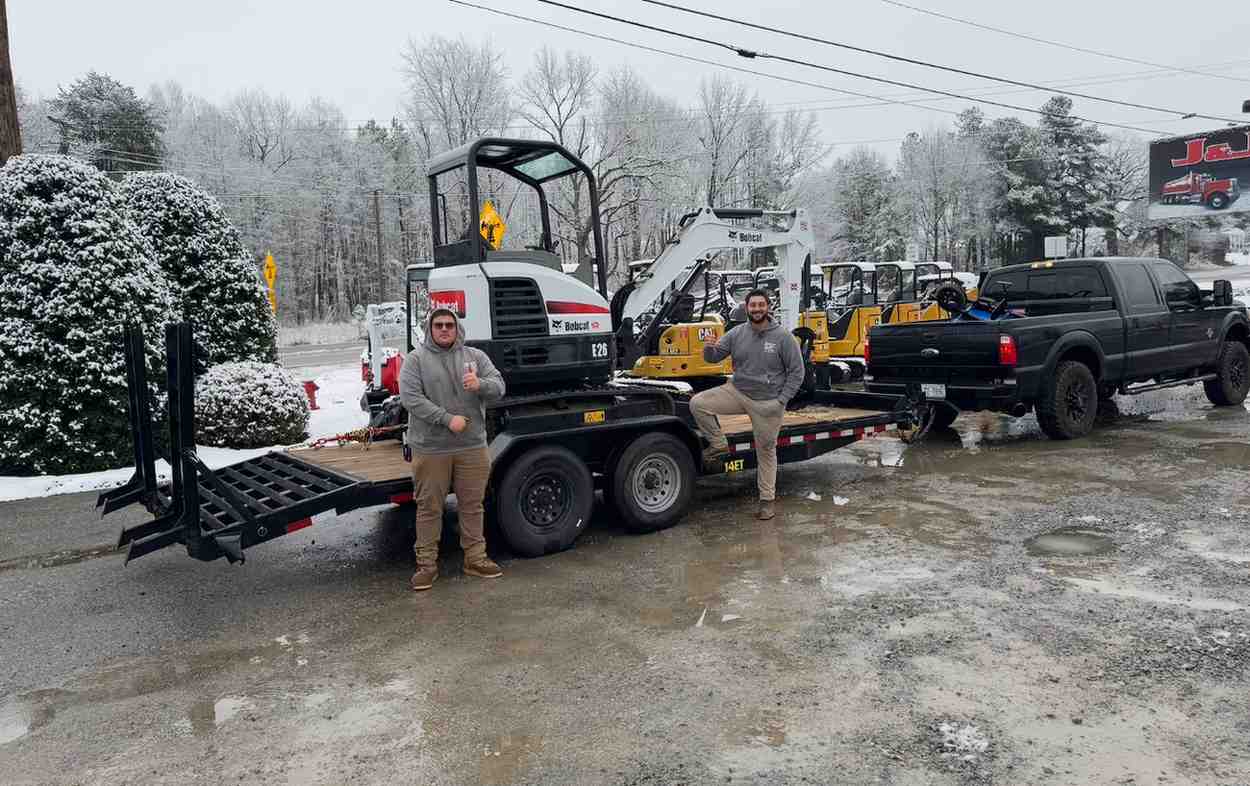Commercial Concrete Trash Pads
Local Concrete installs heavy-duty commercial trash pads engineered for the demands of dumpsters, compactors, and waste vehicles. Our pads are poured with minimum 4,000 PSI concrete, reinforced with rebar and fiber, and built at least 6 inches thick to resist cracking, settlement, and corrosion. Designed for accessibility and proper drainage, every pad supports waste operations safely and keeps client sites clean, compliant, and protected for years of reliable service.
Dependable Strength and Clean Site Performance by Local Concrete
Trash pads may be out of sight, but they’re never out of mind when it comes to site cleanliness and operational reliability. At Local Concrete, even “backstage” commercial features are engineered with precision, built for durability, and finished for easy use and maintenance. Every pad we install is a reflection of our commitment to measurable quality and smart site planning.
Why Invest in a Commercial Concrete Trash Pad?
A well-constructed trash pad is essential for every business, apartment complex, retail center, or public facility managing high waste volumes. These pads see heavy loads, frequent vehicle traffic, and daily exposure to chemicals, spills, and weather. Unlike asphalt or gravel surfaces—which quickly crack, rut, or become hazardous—properly reinforced concrete pads deliver dependable service and protection for decades.
Investing in a purpose-built trash pad means:
- Easy and reliable access for waste haulers, compactors, or dumpsters
- Resistance to surface damage, washouts, and sinking under constant weight
- Improved site hygiene, safety, and regulatory compliance
Built with 4,000 PSI Strength and Engineered Rebar Reinforcement
At Local Concrete, every pad is poured using minimum 4,000 PSI concrete—a strength rating chosen to resist repeated impacts, heavy wheels, and the pressure of fully loaded containers. Every pad is uniquely formulated for the site, accounting for soil conditions, pad size, and load expectations. Steel rebar is precisely placed in grid formation throughout the pad, and synthetic fibers are mixed directly into the concrete for added toughness, crack resistance, and flexural strength.
Key Material Features
- 4,000 PSI or higher compressive strength
- Fiber reinforcement for micro-crack control and slab longevity
- Rebar grid, placed per commercial spec, for support across every square foot
- Specialized concrete admixtures if additional chemical or salt resistance is requested
Unlike basic flatwork, these pads are built with measurable endurance for daily wear, temperature swings, and the pressures of commercial operations.
Designed for Your Site and Operations
No two trash pads are the same. Our team works closely with managers, engineers, and contractors to design every element for your specific needs:
- Dimensioned for your waste container type, access lanes, and scheduled vehicle turning movements
- Sited with finished grade, slope, and drainage in mind—ensuring water, oils, and chemicals do not pool or erode the pad or surrounding areas
- Ramped, edged, or bordered for compliance with safety or local code requirements
Local Concrete pads routinely support:
- Standard dumpsters and front-loading waste containers
- Large compactors for retail or multi-family facilities
- Recycling stations and hazardous waste drop zones
- Tractor-trailer access for high-volume commercial sites
Pads can be integrated with trash enclosure walls, fencing, bollards, or curb stops for security and site control.
Durable, Low-Maintenance, and Corrosion-Resistant
Trash pads experience constant abuse. Spills, leaks, wheel scrapes, and weather can quickly damage inferior work. Local Concrete’s engineering ensures every pad:
- Resists surface scaling, corrosion, and chemical attack
- Minimizes maintenance—no rutting, sinking, or recurring patchwork
- Maintains finished surface grade and easy cleaning year after year
Our proper curing practices, advanced sealers, and tested reinforcement strategies make pads last longer and perform better, reducing total cost of ownership for facility managers.
Pad Finish Options
Function comes first—every pad is finished to avoid slickness, surface water retention, and unnecessary wear. Clients can choose:
- Heavy Broom Finish: Superior traction and water runoff, resists slickness from grease or moisture.
- Curb or Bullnose Edges: Prevents spalling at pad perimeter, improves appearance, and supports enclosure walls.
- Stamped Borders: For pads in prominent locations, optional decorative banding can add visual value.
For pads exposed to hazardous chemicals, you may select specialty non-porous sealers or advanced overlay systems for maximum protection.
Construction Process: Precision at Every Step
Local Concrete’s repeatable construction method produces lasting results for every site:
1. Site Survey and Pad Design
We work with site plans or perform on-location measurements, assessing soil compaction, surface drainage, and facility access. Pad dimensions, level, and border placement are finalized per operational needs.
2. Excavation and Subgrade Preparation
Existing surface materials are removed, base graded, and compacted to support heavy loads. High-traffic pads receive extra substrate stabilization or thicker gravel bases, as specified.
3. Formwork and Reinforcement
Forms are built for precise pad shape, thickness (usually a minimum of 6 inches, or as required), and edge structures. Steel rebar is tied into a tight grid, and fiber reinforcement is mixed into the concrete batch for all pours.
4. Pouring and Finishing
Slump, mix, and environmental conditions are verified onsite. Concrete is poured, leveled, and vibrated for compaction. Surface is broom finished or given a specialty treatment depending on pad specification.
5. Curing and Sealing
Curing is strictly controlled for optimal slab strength—often covered or moisture-treated for up to a week. High-performance sealer is then applied for weather and chemical protection.
6. Final Inspection and Turnover
Pad is reviewed for grade level, finish quality, reinforcement, and drainage performance. We collaborate with project managers to ensure enclosure or fence installation is completed without damage to the pad.
Compliance: Exceeding Code for Safety and Longevity
Local Concrete builds every pad to meet or surpass local and national codes, including:
- Dumpsters and compactors require a minimum pad thickness (usually 6-8 inches)
- Pad pressure ratings specified for truck and equipment weights
- ADA and site access standards for ramps, slopes, and clearance
- Environmental requirements for runoff and chemical containment
We partner with property managers, architects, and approval agencies to guarantee every new pad passes inspection and serves the facility without compromise.
Performance for Decades
Concrete trash pads are a strategic investment. With the right design and construction, your business can expect:
- Less frequent repairs and reduced downtime
- Safer operations for employees and haulers
- Cleaner, more professional appearance
- Higher site value and easier regulatory compliance
Local Concrete is committed to supporting every pad with clear maintenance guidelines, fast warranty service, and expert repairs should damage ever occur.
The Local Concrete Advantage
Choosing Local Concrete means choosing reliability, measurable quality, and honest communication for every job. Our team understands the technical, logistical, and operational demands of commercial waste areas. Pads are always built:
- With premium materials and up-to-date reinforcement
- On schedule and in collaboration with other contractors
- With transparent reporting and post-installation support
Every pad we build reflects our reputation—engineered tough, finished right, and delivered clean!
Frequently Asked Questions: Commercial Trash Pads
What thickness is required for a trash pad?
Most commercial codes require 6 inches or more; compactors and heavy containers may need up to 8 inches, with reinforced subgrade.
How does reinforcement improve pad durability?
Steel rebar and synthetic fiber distributed through the slab create a composite structure that resists cracking, settling, or edge damage even under heavy loads.
How do you protect pads from chemical spills or corrosion?
Specialty sealers and dense concrete mixes prevent absorption and minimize long-term surface breakdown—even with repeated exposure to typical waste site chemicals.
Can trash pads be integrated with fences, curbs, or enclosures?
Yes—pads can be built with embedded posts, curb stops, or edge lips for security and ease of enclosure installation.
How long should a pad last?
A properly constructed and maintained pad should last 20–30 years or more, even under intense use.
The Local Concrete Promise
Every commercial trash pad is designed, reinforced, and installed with measurable care and technical excellence. When your operations depend on reliable waste management, Local Concrete delivers engineered pads built strong, built smart, and built to last.
Let us help you create clean, durable, and code-compliant solutions that support your business for years to come. If you need specs, pad design, or fast turnaround for your next project, contact us today for a consultation.
What Other Homeowners Say
Don't just take our word for it, see what the awesome people we work with have to say.
Homeowner
Homeowner
Cynthia Mayes
Homeowner
See our work
Welcome to the spotlight, where Local Concrete shines, turning the ordinary into the extraordinary.
Lets work together
Ready to transform your idea into reality? Local Concrete uses the best in class concrete mix designs incorporating 4,000 psi with fiber reinforced concrete. Using the most up to date modern finishing methods and setting the industry standard on quality and project outcome!



